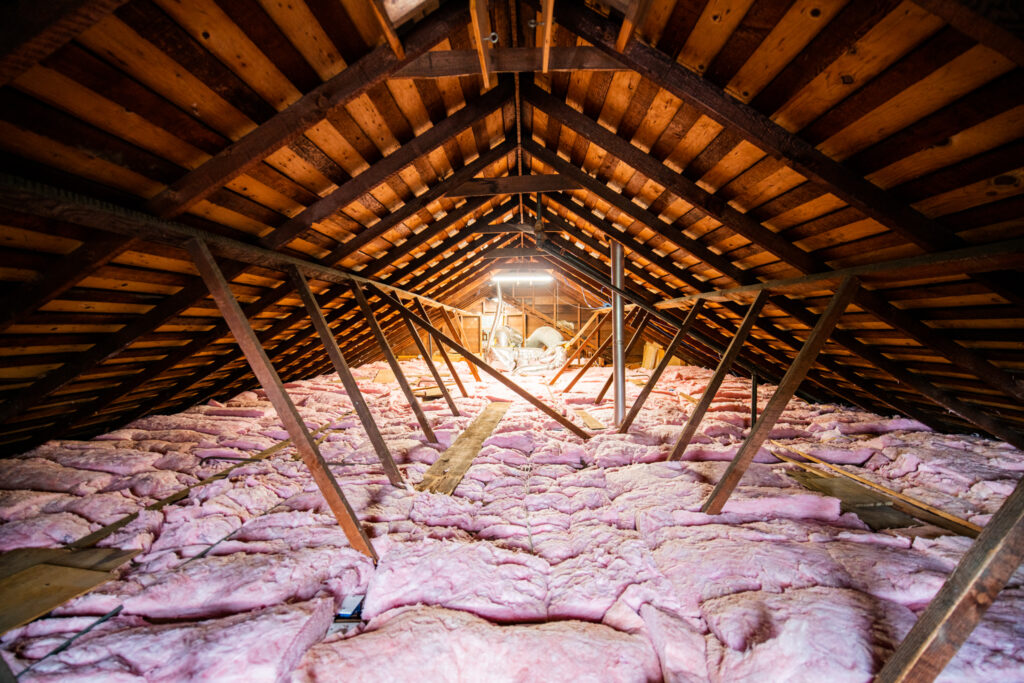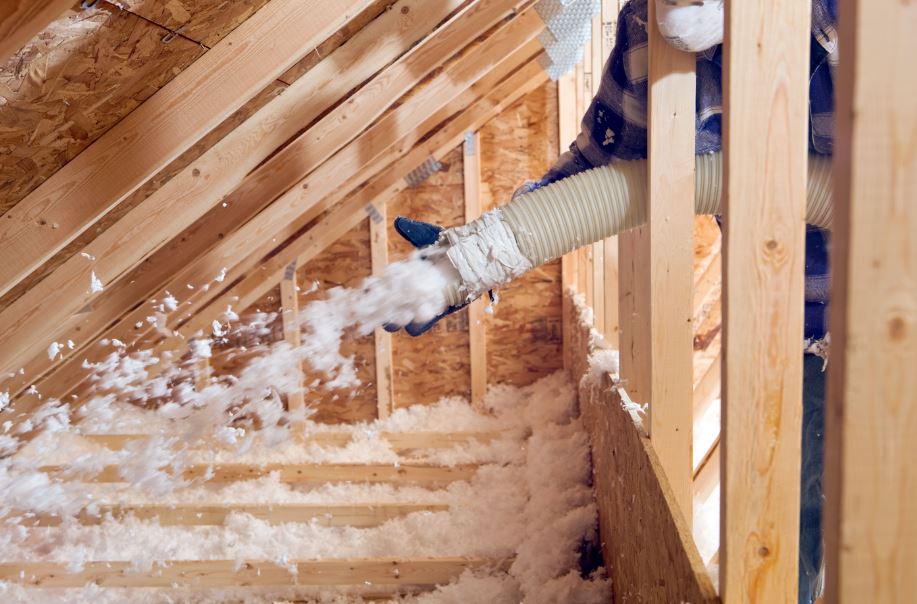Discover the Various Sorts Of Attic Insulation and Their One-of-a-kind Advantages for Your Home's Power Effectiveness

Fiberglass Insulation
Fiberglass insulation is among the most frequently used materials for attic room insulation due to its superb thermal efficiency and cost-effectiveness. Composed of small glass fibers, this product properly traps air, producing a shielding barrier that assists keep constant interior temperature levels. Its high R-value per inch makes it especially effective at withstanding heat transfer, which is critical for energy conservation in homes.
Installation of fiberglass insulation is fairly straightforward, often available in batts or loose-fill types, suiting various attic setups. In addition, it is non-combustible and immune to moisture, decreasing the danger of mold growth. This resilience adds to its longevity, making fiberglass a feasible lasting investment for homeowners.
Furthermore, fiberglass insulation is commonly made from recycled materials, which boosts its eco-friendliness. The product can likewise add to soundproofing, minimizing sound transfer between rooms. While it is necessary to put on protective equipment during setup to stay clear of irritability from the fibers, the general benefits of fiberglass insulation, consisting of energy savings and ecological factors to consider, make it a preferred selection for improving attic efficiency and promoting a comfy living setting.
Spray Foam Insulation
Spray foam insulation is an extremely effective alternative for attic insulation, understood for its remarkable air sealing and thermal performance. This ingenious insulation material is made up of a mix of isocyanate and polyol resin, which, when incorporated, increases swiftly to fill gaps and dental caries in the attic space. Its capacity to abide by various surfaces makes sure a continuous obstacle versus air leaks, significantly lowering warm loss during chillier months and heat gain throughout warmer periods.
Among the vital advantages of spray foam insulation is its high R-value per inch, which indicates it offers superb thermal resistance in a reasonably slim application. This is specifically helpful in attics where room is typically limited. Additionally, spray foam can assist minimize moisture buildup, reducing the danger of mold and mildew development, which can be harmful to both the structure and interior air top quality.
While the preliminary price of spray foam insulation might be higher than typical choices, its long-term energy financial savings, paired with increased convenience and boosted home value, make it a beneficial financial investment for house owners looking for boosted power efficiency. Attic Insulation DFW. Overall, spray foam insulation attracts attention as an efficient option for maximizing attic room insulation
Cellulose Insulation

Cellulose insulation is a popular option for attic room insulation, mostly made up of recycled paper products treated with fire retardants. This eco friendly alternative is known for its exceptional thermal performance, properly decreasing warm transfer in both summer and wintertime months. The dense composition of cellulose permits it to fill up voids and spaces in attic room rooms, offering a smooth obstacle against air leakages.
Among the significant advantages of cellulose insulation is its capability to withstand mold and mildew and insects, owing to the fire resistant treatments used throughout manufacturing. Additionally, it flaunts a high R-value per inch, which converts into exceptional power efficiency. Home owners can anticipate lower cooling and heating expenses as an outcome of boosted insulation.
Setup is commonly accomplished with blowing loose cellulose into the desired area, permitting a reliable and quick procedure. This approach additionally decreases disruption to the existing framework. Furthermore, cellulose insulation has a fairly low ecological impact, as its manufacturing process makes use of recycled products, adding to lasting structure methods.
Rock Woollen Insulation
Amongst the numerous choices for attic room insulation, rock wool, also called mineral woollen, sticks out as a result of its outstanding thermal and acoustic performance. Made from recycled or natural products, rock wool is created by thawing rock and spinning it into fibers, resulting in an item that supplies exceptional insulation buildings.
Among the significant advantages of rock wool insulation is its high R-value, which shows its performance in resisting heat flow. This characteristic not only boosts energy effectiveness however likewise contributes to keeping a comfy interior temperature year-round. Additionally, rock woollen is naturally fire-resistant, making it a safer alternative for homes as look at these guys it can stand up to heats without melting or launching hazardous fumes.
Moreover, rock wool insulation stands out in soundproofing capacities, efficiently lowering noise transmission between spaces and from outdoors sources. Generally, rock woollen insulation gives an extensive remedy for enhancing power performance, safety, and convenience in household settings.
Radiant Barrier Insulation
Glowing obstacle insulation works as an effective option for decreasing heat transfer in attics, especially in warmer environments. This kind of insulation Get the facts works by showing glowing warmth away from living areas, therefore decreasing the amount of warmth that enters a home throughout warm weather condition - Attic Insulation DFW. Normally composed of a highly reflective product, such as aluminum foil, glowing barriers are installed in attic rooms, dealing with the roof covering, where they can obstruct incoming warm from the sun
The main advantage of radiant obstacle insulation is its ability to lower air conditioning expenses. By reflecting heat instead of absorbing it, radiant barriers can assist preserve a much more steady indoor temperature, decreasing the workload on air conditioning systems. This efficiency translates into lower power bills and boosted convenience for home owners.
Along with energy cost savings, radiant barriers can additionally add to boosted interior air top quality. By reducing heat buildup, they help decrease humidity levels, which can prevent mold and mildew development and boost total air flow. When mounted correctly, radiant barrier insulation can be an important addition to any kind of energy-efficient home, making it a worthy factor to consider for homeowners looking to improve their attic insulation method.
Final Thought
In final thought, recognizing the various kinds of attic insulation-- fiberglass, spray foam, cellulose, rock wool, and glowing barriers-- enables property owners to make informed choices pertaining to power efficiency. By picking the proper insulation product, significant decreases in power prices can be accomplished, along with enhancements in indoor convenience.

In final thought, understanding the numerous types of attic room insulation-- fiberglass, spray foam, cellulose, rock wool, and glowing barriers-- makes it possible for house owners to make informed choices concerning power effectiveness.